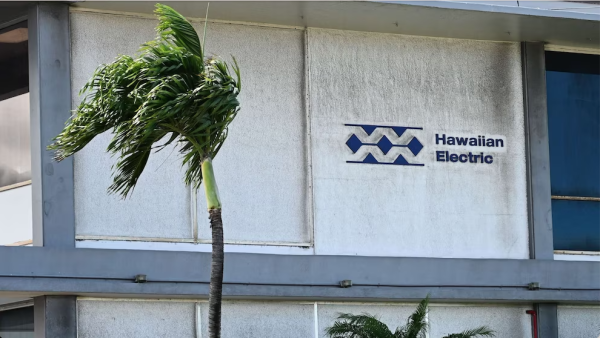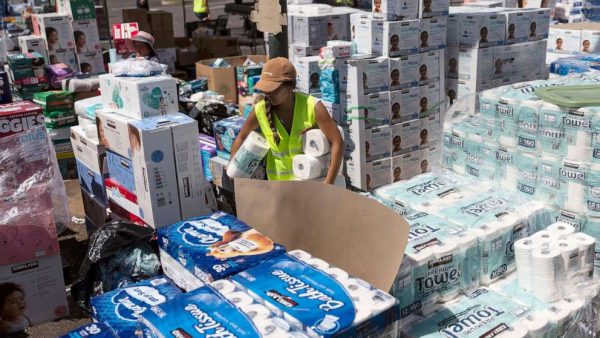As the country heats up from global warming, wildfires are becoming an increasingly common occurrence all over the United States. This year alone, there have been just under 44,000 wildfires spanning across 10 states. These fires have burned over 2,386,207 acres, and are a steadily growing problem, especially in the western region of the country. Even in Pennsylvania, we’ve felt the effects of these blazes from over 600 miles away, covering the community in a grayish-yellow haze. The island state of Hawaii, known for its beautiful landscapes and thriving wildlife has now experienced such climate disasters firsthand when wildfires blazed across parts of Maui on August 9th. Causing record levels of destruction with an estimated 97 dead, the fires became one of the nation’s deadliest disasters.
There has been progress since the catastrophe; the death toll fell from 115 people initially reported, and only 31 people are still missing out of the original thousands. Maui County officials have identified 82 out of the 97 fatalities: the unidentified probably accounting for some of the missing. Identifying has become problematic since DNA testing on subjects can take months or even years, as proved in disasters like Hurricane Katrina, the Paradise, California wildfires, and the attacks on September 11th. Even for the locals safe and accounted for, the future looks bleak. A housing crisis is already in full force with 6,000 inhabitants of Lahaina and other damaged areas staying in Maui hotels while another 1110 are living in Airbnbs and short-term rentals. Early estimates project that a total of 5.5 billion dollars will be needed to repair damaged communities in just the Western part of Maui.
In the coming weeks, the first neighborhood is to be reopened. Located in the farthest west section of the burned area, the community is between downtown Lahaina and the resort area of Ka’anapali. Residents can now visit what little is left of their homes after they show proof of residency and obtain a re-entry permit. Maui County authorities are taking the safety of the community very seriously, giving inhabitants masks and other protective equipment for their visit. Counselors are available to help residents work through the emotional turmoil of seeing their past lives in ashes. The Red Cross is also helping out by providing meals, mental health support, and financial aid. Although financial assistance is being given for the next 18 months and the Federal Emergency Management Agency has already distributed around 19 million in federal aid, residents say they were receiving more help from charitable organizations and volunteers than from the government.
The whole community has become active in the matter as county officials are suing Hawaiian Electric in the lawsuit they filed on August 24th for their mishandling of power lines. 
Victims followed in law enforcement’s footsteps, claiming that the company was at fault for keeping the power lines electrified during the high winds caused by Hurricane Dora. Although Hawaiian Electric admits that its power lines started a fire the morning of August 9th, they claim their lines weren’t electrified around the time the true fires started. Shelee Kimura, the chief executive of Hawaiian Electric, responded to the allegations, calling the lawsuit, “factually and legally irresponsible.” The U.S. House Committee has begun holding its public hearings for the role the electrical lines played in the fire on September 8th. Experts say that electrified power lines could have been the cause of the fire, but other factors in what caused such a destructive blaze are being taken into consideration, such as 16% of Maui being in severe drought at the time of the fire. Damage was also the result of none of the 80 warning sirens throughout the island activating at the time of the fire, limited water, and high traffic evacuation routes. However, families impacted by the fires are not giving up and many have submitted written testimonies describing the fires’ effect on them and seeking who should be held accountable.
The fires in Maui were horrific as shown by the destruction left in the wake of the flames and the record-breaking death toll. The fires not only killed many, but they leveled 2,200 structures, numerous of which were historic landmarks as Lahaina was the capital of the Hawaiian Kingdom many years ago. Officials say that the fires left behind toxins that could have long-term environmental effects on the state’s water, coral, plants, and wildlife. Sadly, events like this are growing more and more common, as climate change renders extreme heat waves 5 times more likely than they were 150 years ago. Dry land from the excess heat and lack of water has created the perfect environment for fires, which burn nearly 2 times the amount of tree cover as they did 20 years ago.
Disasters caused by climate change are increasing at a steady rate and causing more destruction all over the world, but the locals in Hawaii are not letting their losses get in the way of helping each other out. People are banding together in the wake of this crisis, with local communities working together to set up resident-led aid centers throughout the island. 5 miles north of Lahaina, in an area called Kahana, locals are helping haul coolers and boxes to makeshift distribution centers. “Over the course of decades, or generations, you just begin to understand that you are responsible for your own safety and survival,” said Kaniela Ing when interviewed by ABC News.
Although the future of the island is not clear and the economy will suffer damaging losses, the fire has brought the community together. Residents and local officials are working together to seek accountability for the fires, and communities are working quickly and efficiently to distribute aid and supplies. The birth of this new unity, although created in times of struggle, may potentially create the chance for locals to reclaim the land that was lost and form new communities with the bonds they have made.




